Installing and Using Proxychains Utility on TAILS Temporary Live Boot Session

Introduction
TAILS is designed to only connect to the internet via Tor. However, in some circumstances this interferes with some applications making low-level socket connections. For example, the bitcoin_fork_claimer tool needs to make a socket connection to the network of a fork coin in order to broadcast a particular transaction. Connections of this kind need a proxy wrapper in order to properly route through Tor.
The Proxychains utility is able to wrap a child process and do the appropriate routing of the outgoing connection through the SOCKS5 proxy port provided for this purpose on TAILS on localhost:9050. This allows child processes such as the bitcoin_fork_claimer script be used over Tor without any special modification to use the proxy.
Installing Proxychains
This article assumes that you have completed the previous guide on setting up a TAILS temporary live boot session. Proxychains is not included in the default set of software packaged in TAILS. However, it is included in the external and sanctioned software repositories that can be easily accessed and installed from. Every live-boot session that needs Proxychains will need to perform this installation process.
To install software from repositories, one must set an administrator password when booting up the TAILS session. To do so, you must enter the Additional Settings dialog in the boot menu:

In the menu, set the admin password. It is only valid for this boot session, so it doesn't need to be a super-robust password:
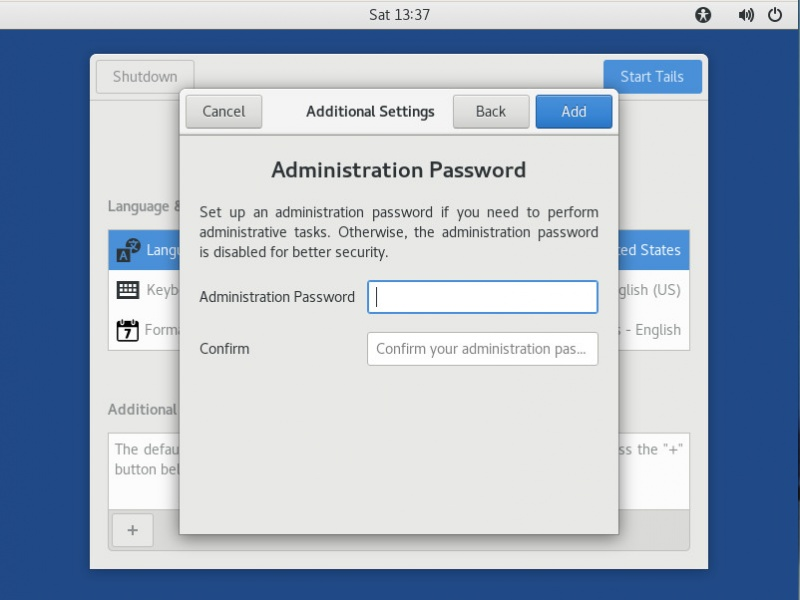
You must connect to the internet as was show and discussed in the TAILS setup article. We also need to open the Terminal app.
The first command we need to run is:
sudo apt-get update
which syncs the OS with the online software repository (hosted by Debian, which is the Linux distribution TAILS is derived from).
It will prompt you for the admin password:
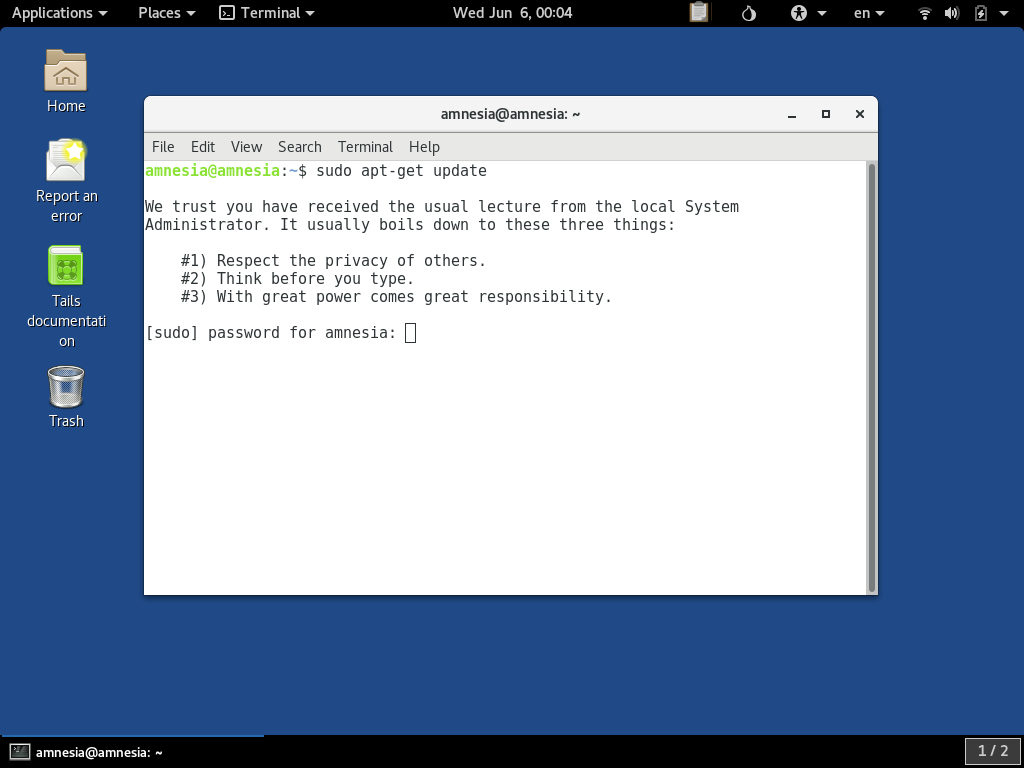
It will take a minute or two to finish syncing. When it is done, it will look like this:
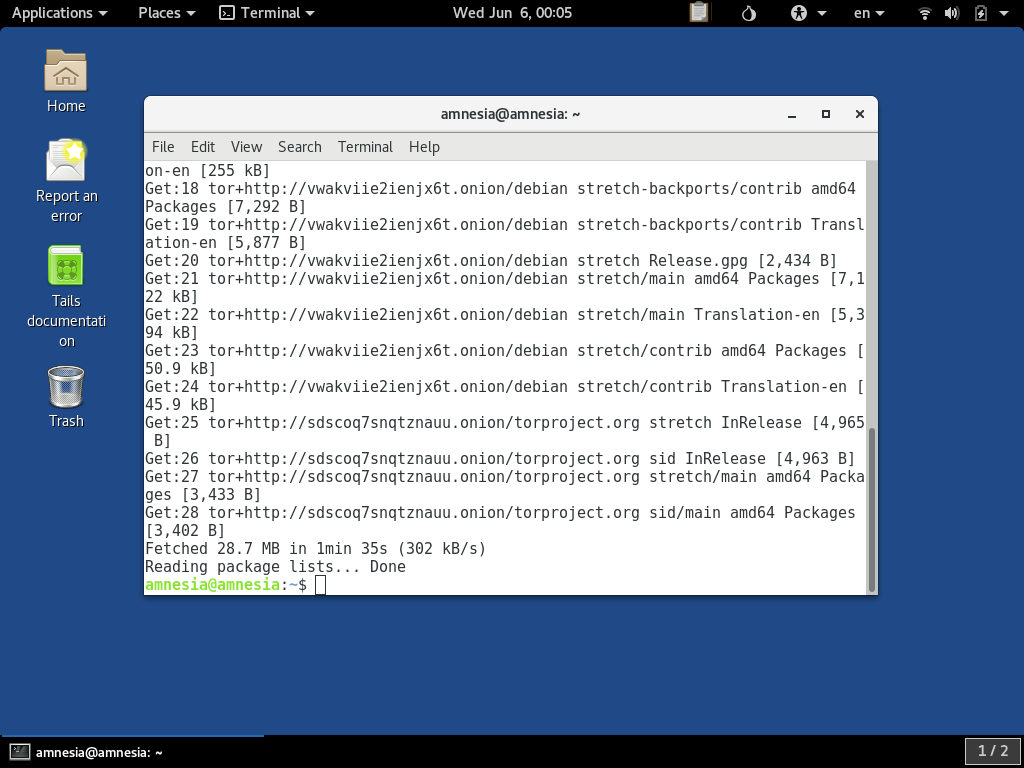
We must install two particular packages, first the proxychains packages and second, the dnsutils package which is needed by Proxychains.
You can do so by giving the command:
sudo apt-get install proxychains dnsutils
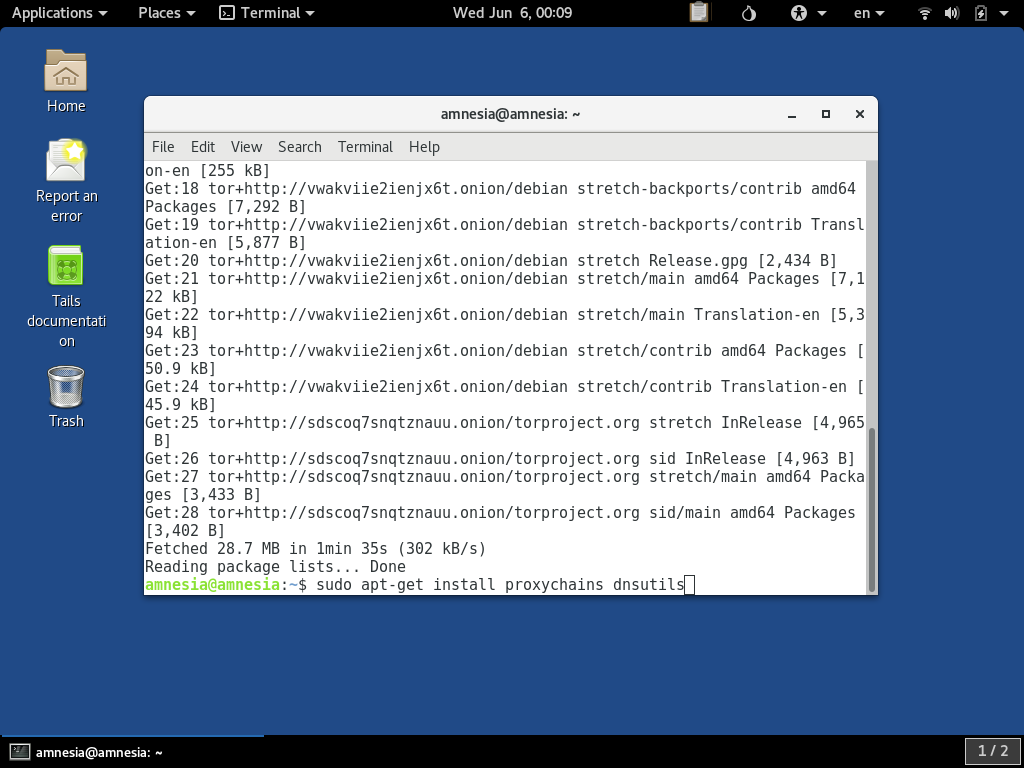
Pressing Enter will cause it to prompt you again for the Admin password.
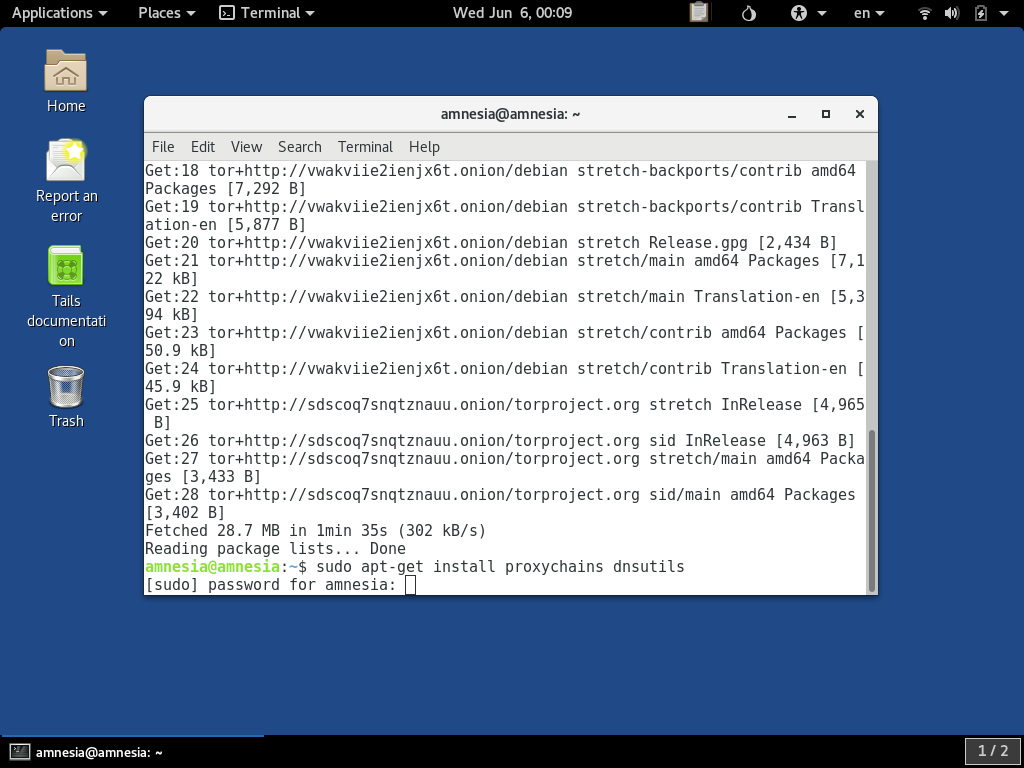
It will also ask you to press the Y key to confirm the installation:
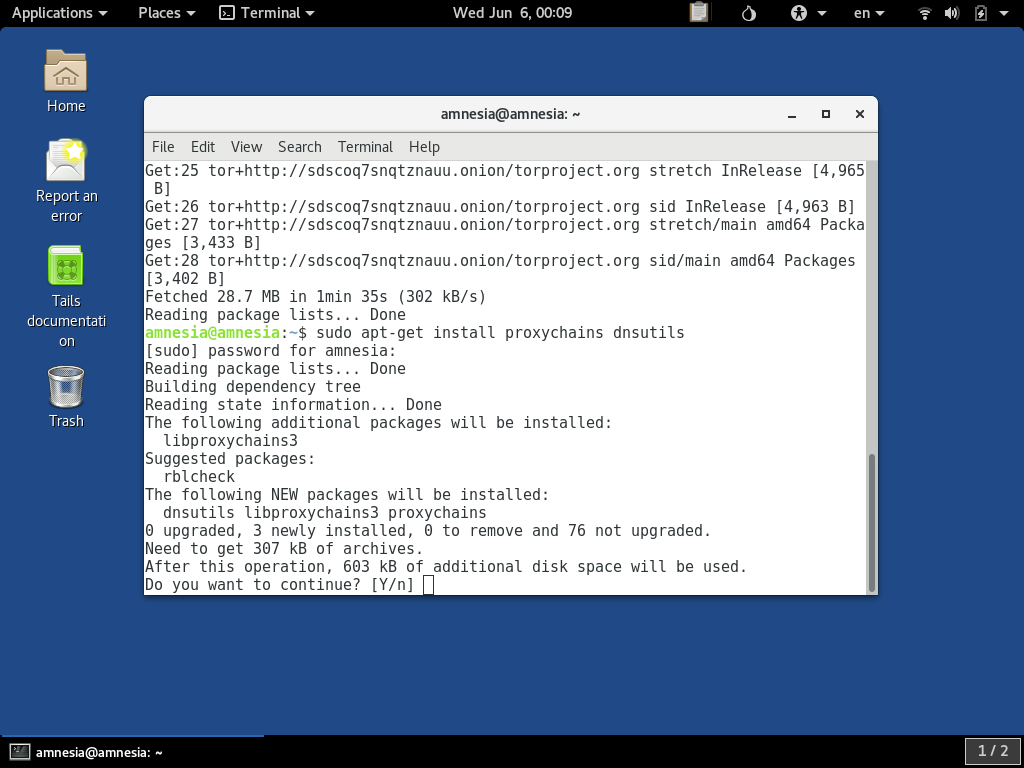
This will take another minute or two to run. When it is done, it should look like this:
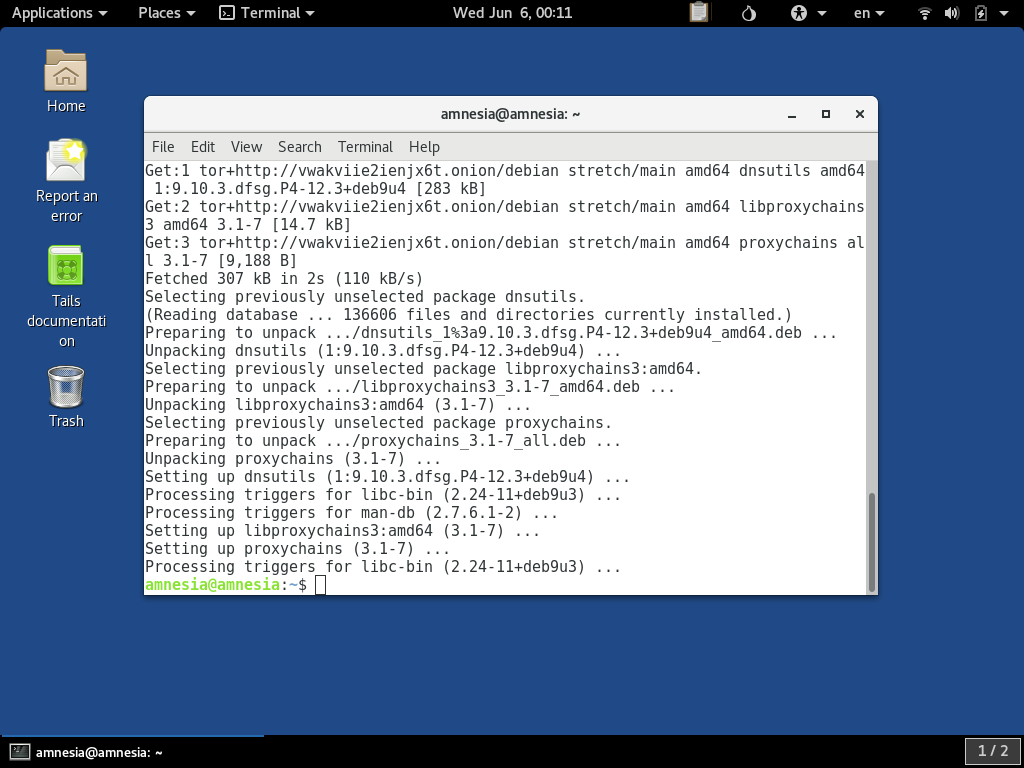
To confirm the install of proxychains you can try invoking the proxychains command with no parameters to see the usage:
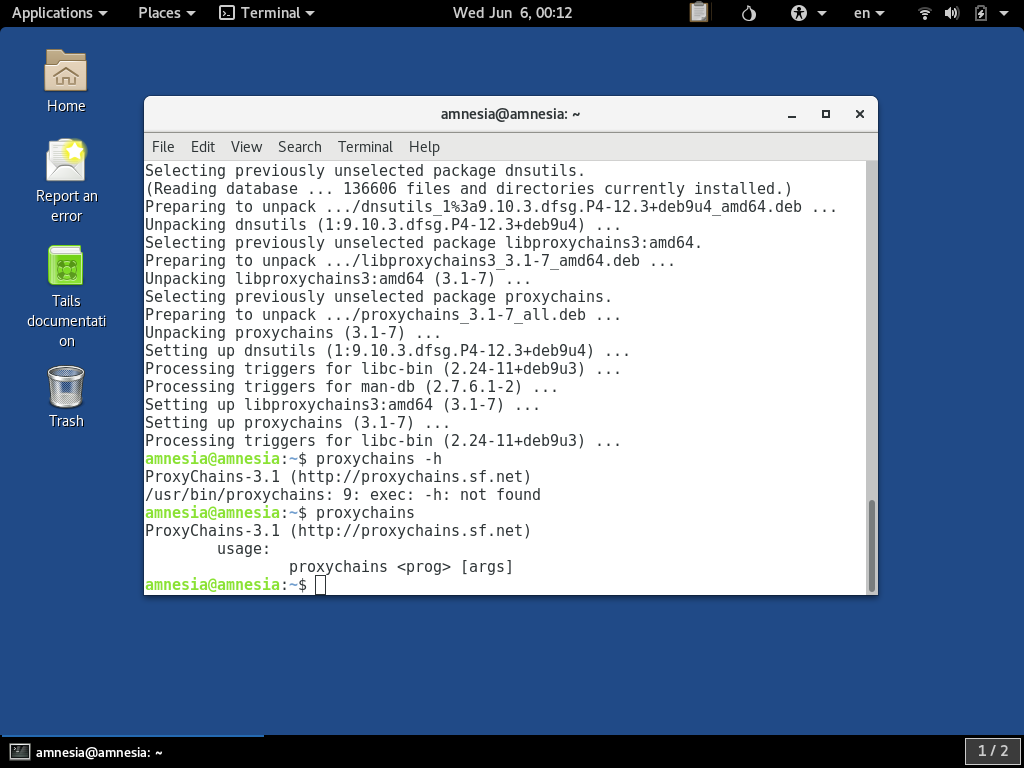
Using Proxychains
If a utility is unable to connect to some internet service, the proxychains utility can be specified to wrap the invocation of some terminal command:
proxychains some_command <some> <command> <args>
The Proxychains tool is configured to put the traffic through the localhost SOCKS5 proxy and into Tor in a way that is completely transparent to the child process.
Proxychains is required for using bitcoin_fork_claimer under TAILS. We cover that in its own article: